Travel to Slovenia
Day 9 Pivka – Postojna - Rakov Škocjan – Predjama - Pivka (65 Km.)
(in 12 Km.) Postojna: The Karst region is based on a type of porous stone that has given rise to an international denomination: karstic rock. The geological relevance of the Karst is understood with a look at the map of Slovenia: the region is holed by dozens of caves. A whole subterranean world that begins in the grotto of Postojna (Postojnska Jama).
Postojna caves is a network of 20 km of tunnels rich in speleothems, galleries and halls, in which, over the course of 185 years, experienced guides accompanied more than 30 million visitors. This is the largest cave in the classical karst and, at the same time, the most visited tourist grotto in Europe. In 1872 the railway lines were installed in the grotto, and in 1884 the electricity line was laid. In this way, the grotto train currently facilitates the visit and thanks to the electric lighting, you can admire all the amplitude and grandeur of the underground world, where the geological past is described in a unique way. The Postojna caves offers visitors the visual delight of an extraordinary richness in stalactites and stalagmites, calcareous formations of the most diverse shapes, colors and generations.

Postojna caves
The cave is open all year. Once inside the cave, choose the guide of the language that interests you. When we made the visit there was a Spanish guide at 3:00 p.m. The visit lasts about an hour and a half. Inside the cave the temperature is 8 degrees, which is why you have to go warm. The tour starts at the railway station inside the cave. You get on a little train that takes you through an artificial tunnel built during the renovation of the train tracks 40 years ago. The journey is about 2 kilometers long and 10 minutes long. The first natural gallery is black, as a result of a fuel explosion during World War II. Then comes the "Gothic Hall", rich in stalactite decoration, where remains of animals from the Ice Age have been found. When you get off the train the different guides wait for you with some luminous signs indicating the language in which they will explain.
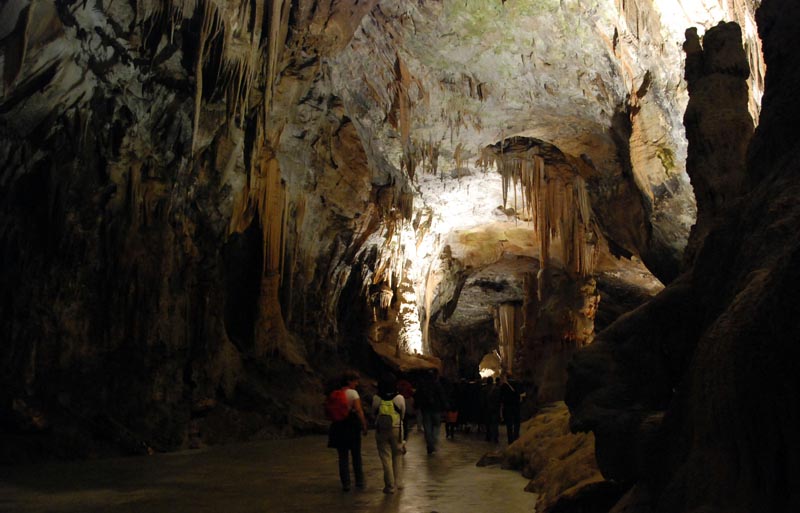
Postojna caves
The footpath begins ascending towards "the great mountain", the highest point of the cave, about 40 meters above the entrance of the cave. Then the road descends towards the "Russian passage", which was built to access more interior areas of the caves. As its name suggests, the bridge was built by the Russians who were in the cave during the First World War. Then the road leads to the "Beautiful caves". We found numerous stalactites and stalagmites. Some of them have names that reflect their characteristic shapes. The most famous are: the turtle, the cone, the palm, the pile of charcoal, the curtain and the Dwarves. Another very curious room is the so-called "spaghetti room", due to the series of "calcareous threads" hanging from the roof that looks like this kind of pasta. From there, through the Red Room and the White Room, we advance to the Brillant Gallery, where the most famous limestone formation and symbol of the Postojna Caves is located: The "Brilliant", a 5 meter column with the most intense white of the whole cave.
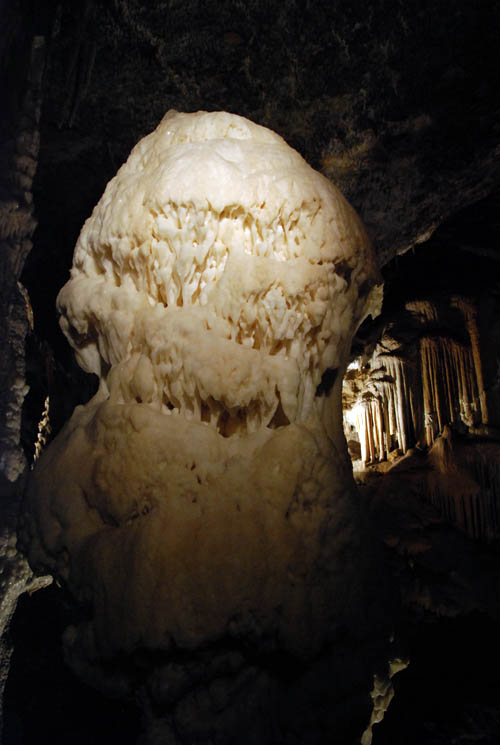
Postojna caves
The footpath ends in the Congress Hall, in which the train that takes us again for another 2 kilometers to the surface. The Congress Hall, formerly known as the Ballroom, has been the venue for dances and concerts for 180 years. It also hosted the international speleological conference from which it takes its name.
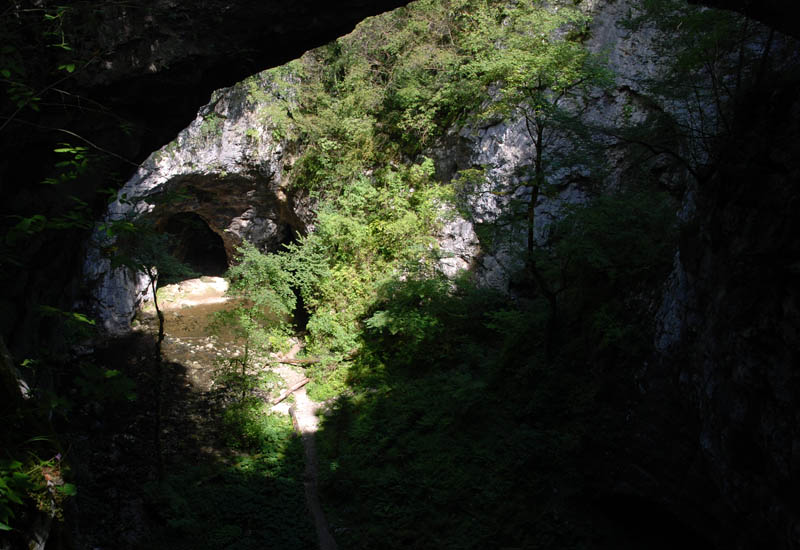
Rakov Škocjan
(in 10 Km.) Rakov Škocjan: More modest, but no less interesting is the visit to Rakov Škocjan, similar in concept to Škocjanske Jame although of smaller dimensions although scattered over a wider terrain. There, the Rak River, is the cause of the erosion work, repeatedly drilling the land and creating natural bridges and chasms of about 70 meters, enlivened with several upwellings, until disappearing into a sinkhole. It is located further east, in the town of Podskrajnik, more specifically in Zelške, near Cerknica, where there is also a polje and a lake was formed in the rainy season, remaining dry in summer but now maintains a permanent water reserve thanks to a dam. The visit, in this case, is free and without guide but the little information that is in the place is in Slovenian although it is possible to get a map of the area in English and other languages in the hotel Rakov Škocjan, located in the center of the travel. It is highly recommended your visit if you like the geology but, in addition, the area is worth it, do not forget that it is located in the heart of the Karst region, famous worldwide for having given name to many of the phenomena and formations that we recognize in the cavities. To make the visit I recommend you go with the car until just before kilometer 4 (by a dirt track). From there a path leads to a viewpoint where we can see a natural stone bridge and the river and different caves at its feet. Then the road goes down to the river, where we can go from one cave to another.
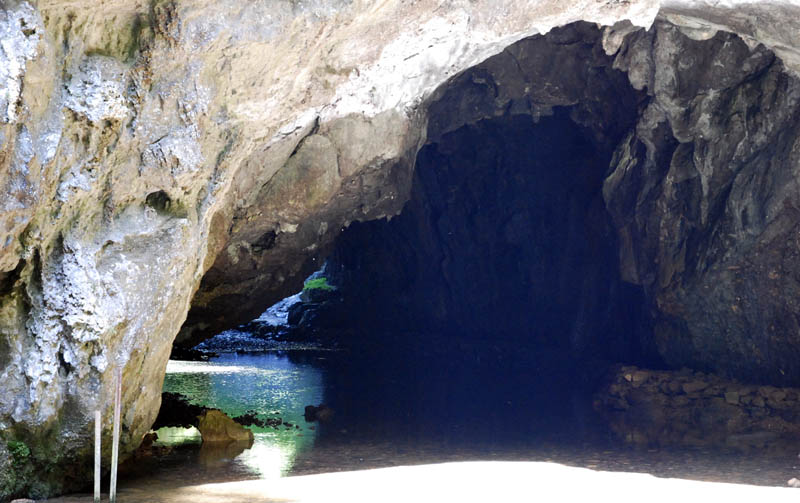
Rakov Škocjan
(in 21 Km.) Predjama: Predjama Castle is one of the biggest tourist attractions in Slovenia. Its attractive is not only due to the spectacular location at the entrance of a cave in the middle of a cliff of 123 meters, but also to the peculiar story of the death of Baron Erazem Lueguer, a kind of Slovenian Robin Hood that attacked the caravans of merchants of the important route that united Vienna With Trieste.
This castle was probably built in the 12th century, but the first mention of which we have proof is of the second half of the 13th century. In 1350 the castle was taken over by Austrian dukes. And in 1398 troops of Aquileia put siege to the castle and finally they burned it. Later the knights of the city of Lienz, of East Tyrol, became owners of the castle. In 1478 it changed hands again, this time when it would reach the hands of the Slovenian version of "Robin Hood", Erazem Lueguer, a thief who, like the original Robin Hood, distributed his booties to the poor.
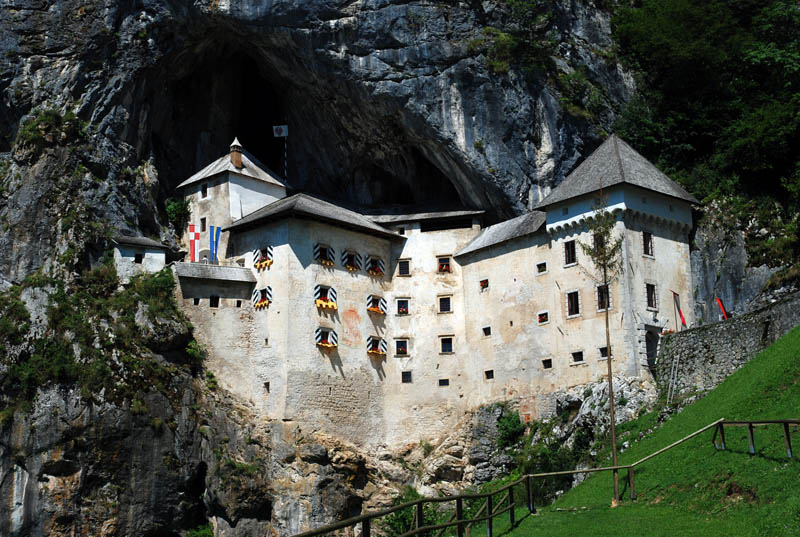
Predjama castle
Later in 1567, the castle was bought again, this time by Hans Kobenzl, an Austrian knight from Kärnten that rebuilt and enlarged the castle leaving it practically in the current state. His descendants continued to be the owners until 1810. The castle went through two other owners until it was confiscated during World War II.
The visit to the interior of the castle allows to see how the castle was adapted to the cave and the rock walls. One of the cavities was used as a stable and through it you can access other caves. The castle is already impressive from the outside because of the total integration in the mountain and the feeling of literally hanging from the rocks. But the tour of the interior is no less impressive. Each room has its charm: closed rooms, terraces, indoor uncovered areas, etc. It is worth reaching the upper area, a cave that penetrates the mountain and that should serve as the castle's larder. Once outside the castle it is highly recommended to walk the path that goes down to the entrance of a cave and offers views from a lower angle of the castle and the mountain.
(in 22 Km.) Pivka: We go to rest again at the farm.